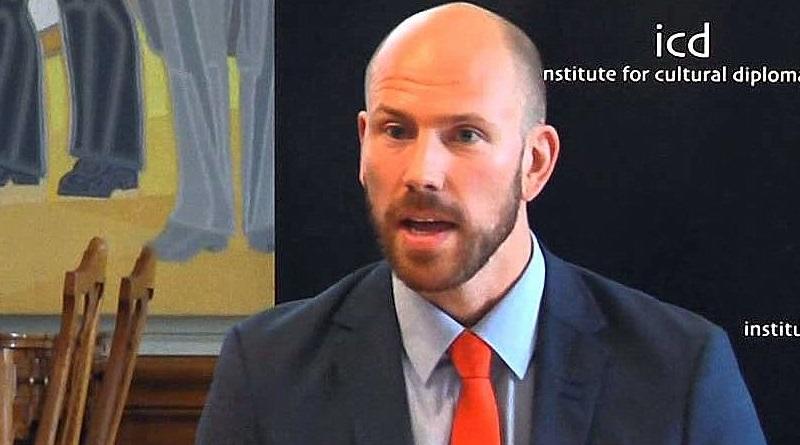Marcus Andersson, co-founder of Future Place Leadership (formerly Tendensor International), in this interview shares his thoughts on place marketing, place management and inter-regional branding in the Nordic region.
Learn about:
- What place branding is all about, and what it isn’t;
- The main differences between nation branding and place branding;
- Why there is so much interest in place branding in Northern Europe;
- Which new opportunities inter-regional place branding offers;
- Which social media he follows and which Twitter hashtags to keep an eye on.
Marcus, a few words about your current projects?
We are currently doing a few projects on helping regions become more attractive to international talent, which involve both the external perspective of attracting through marketing and also improving the capacity of the region to provide a good reception and help those coming to settle in and integrate.
We are also doing a development project on ‘business attraction management’ together with 21 cities and regions from the Nordic countries. The aim is to develop new approaches and tools for investment promotion. In addition, we are involved in several place brand strategy projects at the moment.
When did you first hear about place branding?
I heard the word place branding for the first time a little bit more than 10 years ago. I had just finished my studies and worked for the Baltic Development Forum, an international organisation that had initiated a project focusing on putting the Baltic Sea Region on the map.
The first thing we did was to invite some of the ‘founding fathers’ of place branding, such as Simon Anholt, Wally Olins and Christer Asplund, alongside a whole bunch of high-level business people, academics and civil servants, to discuss the viability of ‘branding the Baltic Sea Region’.
We had a cooperation with the German Konrad Adenauer Stiftung (foundation), which owns Villa la Collina, Konrad Adenauer’s former summer residence, beautifully situated by Lake Como in Italy. That’s where we hosted about 50 persons for a weekend of discussions.
From that moment, I was hooked on the idea of place branding. I had majored in both marketing and international relations, and it all kind of came together when I started to understand what place branding was all about.
Your most memorable moment so far as consultant dedicated to place branding?
I would have to say when we published our Handbook on Talent Attraction Management for Cities and Regions a year ago, as it gained world-wide recognition far beyond our expectations.
There seems to be a lot of interest in place branding in the Nordic region and Sweden in particular – why?
That’s a good question. Perhaps because all Nordics as small countries in the periphery of Europe and on the fringe of world events need to struggle a bit harder than for example mainland Europe to get noticed. All the Nordics are also trading nations and have depended on being open to trade, investment, tourism and exchange of people.
In your view, what is place branding all about?
To my mind, place branding is primarily about creating attractive places – to residents, visitors, investors, talent etc – by continuously showing and proving that you are what you want to be.
Place branding is not so much about logos, slogans, advertising and marketing campaigns, but about development, management, policy, and innovation.
Are there differences in how public administrations, such as Ministries, perceive of and approach place branding, as compared to strategy consultancies?
Some public entities still tend to regard place branding as a responsibility of primarily the communications people within the administration and not as a long-term strategic issue. However, the communications department tend to have little influence over other aspects of place attractiveness
Rightly used, place branding can be a fantastic tool for driving strategic place development, but you risk overlooking this potential if only involve the communications people. It is a bit ironic, as place branding originally comes from the corporate world and most corporations today have made branding a boardroom issue.
From a consultant’s view, which are the key differences between nation branding and place branding?
First of all, the stakeholders you need to work with differ. In nation branding, foreign representations and cultural institutes play a larger role, as an example.
You also need to work much more with understanding and articulating what I would call meta-values on the national level as well as understanding perceptions, while on the local and regional level you, quite naturally, work more with improving the place.
 Your favorite place branding book right now?
Your favorite place branding book right now?
I re-read Simon Anholt’s Places last year and got even more convinced that place branding is more about development, policy and identity rather than communications, marketing and sometimes even creativity.
From your experience, which are the key challenges in place branding?
Making stakeholders co-creators and ‘co-owners’ of a branding platform or strategy.
Where do you see the main challenges and opportunities in inter-regional place branding, such as the Baltics?
Getting national-level government agencies such as tourism boards and investment promotion agencies in the 10 Baltic Sea Region countries on board in the work has been the main challenge. Even though everyone agrees that it is a good idea and offers many benefits, it is a long way to go from that to concrete action.
The main opportunity lies in joining forces in marketing the region on distant markets, such as East Asia and North America, as these regions tend to know very little about each individual country in the region.
Which (social) media do you follow to keep up to date on place branding?
I follow different LinkedIn groups, such as Place Branding and Marketing, Place Branding and Nation Branding. On Twitter I follow the hastags #placebranding, #placemaking and #talentattraction.
In terms of media, I read Monocle.
Thank you, Marcus.
Connect with Marcus Andersson on LinkedIn.
In March 2017 Tendensor International became Future Place Leadership.
Enjoyed our interview with Marcus Andersson on talent attraction and place attractiveness? Spread the word!


